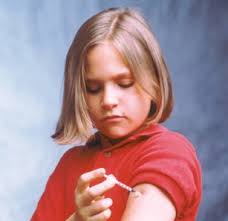Symptoms and Causes of Juvenile Diabetes
Has your child just been diagnosed with Juvenile diabetes?
Juvenile diabetes mellitus is more commonly called Type 1 diabetes. It is a metabolic syndrome and blood glucose levels are too high due to a deficiency of insulin secretion in the pancreas.
What does this mean to you and your family? There may be some changes ahead including changes to diet and day-to-day routines and of course managing insulin.

One of the biggest challenges families and children with type 1 diabetes live with is the daily routine of attention to diet, time schedules, blood glucose testing, and insulin regimens.
All of these are monitored to keep blood glucose levels under control – something the body does naturally in most people. The risk of juvenile diabetes is higher than any other serious chronic disease of childhood.
Symptoms of Juvenile Diabetes
The symptoms of juvenile diabetes, (also known as type 1 diabetes) and type 2 diabetes are very similar.
- It’s not always obvious that a child has type 1 diabetes. Symptoms appear in childhood problems that occur in everyday life. Nausea and vomiting may be misinterpreted as the flu.
- Irritability, fatigue, and apathy can be attributed to the behavior of all children at one time or another.
The discovery of juvenile diabetes may occur during a visit to a doctor for other diseases such as vaginal yeast infection for girls or even a routine examination.
Rapid weight loss is one of the first symptoms of diabetes, especially if the child has also increased hunger in particular after eating. Other symptoms include :
- frequent urination,
- dry mouth,
- fatigue,
- blurred vision
- and numbness or tingling in hands or feet.
Juvenile diabetes, along with other types of disease is not a contagious disease. Another misconception about the disease is the traditional belief that eating sweets can cause diabetes directly. In a sense, eating too much candy can also cause diabetes, because doing so can lead to obesity. But eating sweets alone does not cause diabetes. Stress, however, is a cause of juvenile diabetes or any type of diabetes.
Juvenile Diabetes is believed to be an autoimmune disease. There is also a strong hereditary component to childhood diabetes. The disease tends to run in families. Brothers and sisters of children with diabetes have at least 100 times the risk of developing juvenile diabetes as a child in a family unaffected.

Juvenile diabetes is a chronic health problem for children. There are many myths and misinformation about diabetes. There is also confusion between juvenile diabetes, (also known as type 1) and type 2 diabetes. The symptoms of both are largely the same, however, the cause and treatment are very different.
Diabetes is the leading cause of adult blindness, end-stage renal disease (ESRD), gangrene, and amputation. Being overweight, lack of exercise, family history, and stress increases the likelihood of developing diabetes.
When the blood sugar level is high and constant that leads to kidney failure, cardiovascular problems, and neuropathy. Patients with diabetes are four times more likely to have coronary heart disease and stroke.

